World Premiere at the Calgary International Film Festival
While the name Gabriel Kahane might not be one that you are familiar with now, with the release of his first feature film, Benji’s Hour, he should be on your radar. At only 23 years of age, Gabriel is poised to enter the spotlight.
Official Trailer for Benji’s Hour
Full [Mostly] Unabridged Interview
As described by the Calgary International Film Festival, Benji’s Hour was “written on a NYC subway at age 15 and shot in true indie style six and a half years later.
Gabriel Kahane’s deeply personal feature debut chronicles a lawbreaking teenager (Justin Mark) forced to work at a wig shop owned by the warm-hearted Susan (Catherine Curtin). There he befriends an unstable cancer patient (Holly Heiser) who irreversibly alters the course of his life. Brimming with the nervous energy of its protagonist, Kahane’s remarkably self-assured feature film debut is at times raw, funny, gut-wrenching, sad, yet ultimately hopeful – an absolute stunner that peeks behind the curtain into an often bleak, yet altogether human existence of a young man looking for his place in the world.”
I had the pleasure of sitting down with Gabriel, both on and off the record, and learned more about his creative process, the challenge of getting a small-budget indie film made, and how “coming-of-age” is not only reserved for the young.
Taking on Multiple Roles and Getting Started in Film
Adam Manery
You not only directed this film, you wrote this film, served as one of the producers of this film, edited this film, and you were amazing in the supporting role of Eric. That’s a lot of hats to wear. Was this mostly a result of the indie nature of the film, or do you enjoy having your hands in a little bit of everything?
Gabriel Kahane
It is a lot of hats, but I absolutely enjoy having my hands in everything. And at the end of the day, a director’s job is to have their hands in everything. I am an editor, in terms of the fact that I’ve edited my own work, so I really enjoy the process, but a certain amount of it was simply out of necessity. So, if I could have had another operational producer, I absolutely would have. If I could have had an editor, I would have edited with them. An assistant editor would have been fantastic. But at the end of the day, the film is what it is, I think, because of the fact that it was “get this thing made” with otherwise limited resources. I even went up there to do 2nd unit DP work as well after to get some B-Roll shots of the town. When you have someone so intimately acquainted with every little part of it, it might feel more personal, and I think that that might be a slight byproduct of just kind of wearing all those hats.
It goes without saying that having a first feature film at twenty-three years old is quite an accomplishment. You’ve had a short or two have some festival runs as well, so despite only being twenty-three, you’ve been involved in film for a long time. What was it that got you into making movies as a young teenager?
I’ve never gone to film school or had formal film training, but I do come from an acting background, so I’ve always been involved in the arts. When I was young, around the age of nine, I was screwing around with my VHS camera and it slowly got more and more serious and then we went to the DSLR figuring stuff out. By the time I was 14, I was in high school at La Guardia High School, which is a very artistically charged environment right across the street from Juilliard. I decided to write this short film called “To Henry”. I made it just with an elderly neighbour of mine, a DSLR, and I-Movie. It was about as limited as you can get, but I showed it to some people and they were really moved and I felt moved too, and I figured “so this is it”. And then the year after that I made my 1st “professional” short, which is “Must Be This Tall to Ride”. I was 15 then, and I started writing it when I was 14. That went to a bunch of festivals, which was really lovely, and I went around touring it. Ever since then it’s just been non-stop making short films. I think the thing I love so much about film is the fact that it’s everything. It’s writing, it’s photography, it’s music, it’s pacing, it’s acting, it’s working with people. It is so stimulating and as an individual I really need stimulation.
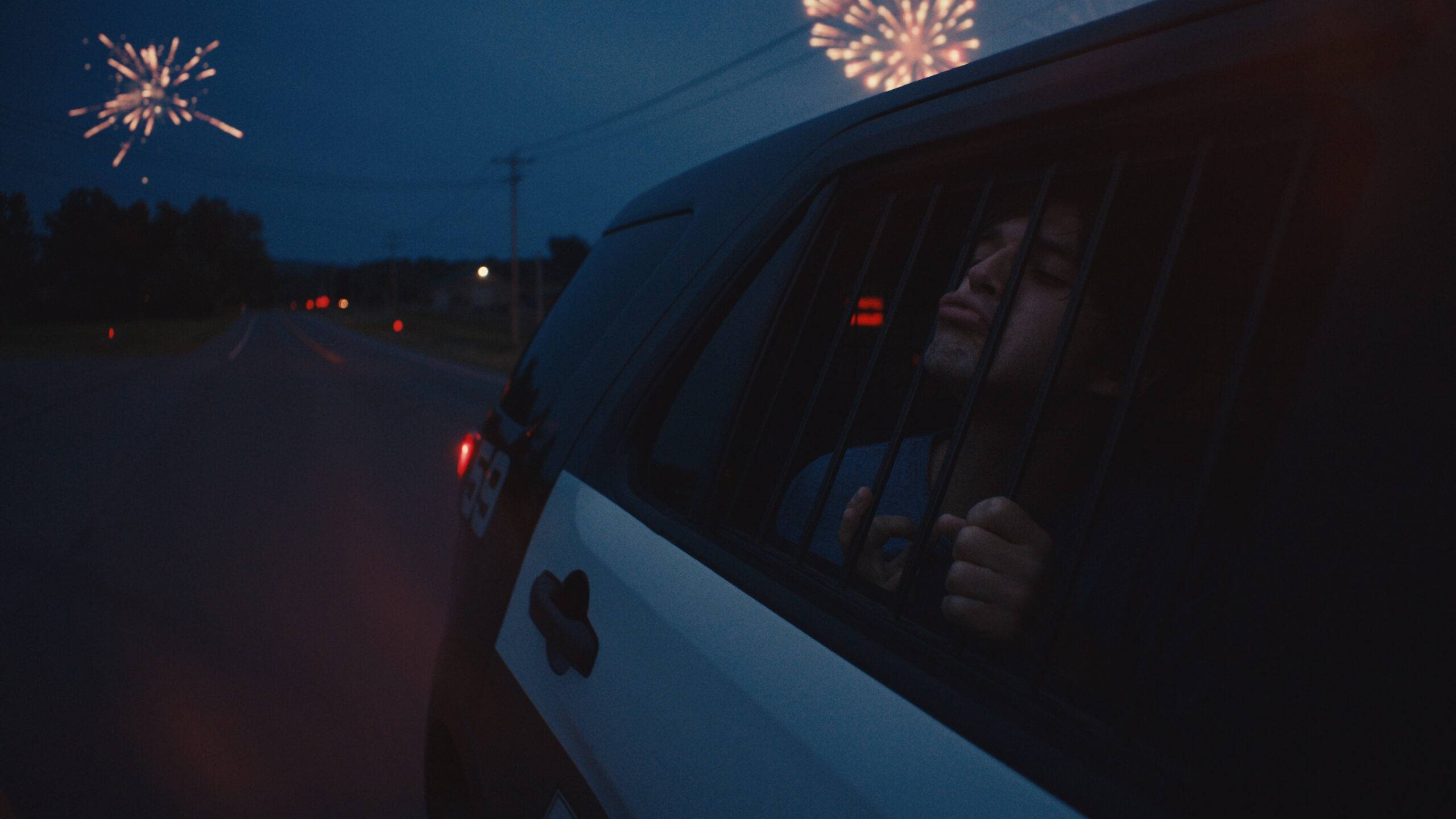
Crafting Authentic Characters and Working with Catherine Curtin
What stands out to me in Benji’s Hour, and your previous work, is your ability to craft characters that are not complete cookie cutter, but are living and breathing outside of like a traditional stock character, and a lot of that is through your dialogue. What is your writing process and how do you write such natural dialogue?
I definitely get positive notes on my dialogue in particular, so that’s a theme I’ve noticed. I think humans are inherently flawed. Regardless of how lovely a person might be, we are human beings and we’re flawed by nature. And I find that, like the word you used, “cookie cutter”, when you try to put people into a box, you get this very formulaic stock character and you lose some of the magic of what it means to be a person. A lot of writers start out with very specific outlines of beginning, middle, and end. “I’ll hit my seven-point structure here, I’ll write my character breakdowns first and then I’ll write the first word”, and I’m not that writer. I often times start with a song. I’ll be listening to a song and I’ll have an image in my mind and then I’ll branch off of that image. Sometimes it’ll be an idea, a concept, an overarching theme that I want to explore. Then I’ll start with the first scene and then just go from there. With Benji’s Hour, I came up with the setting and the general idea of a dramatic teenager, coming of age film. From there I just wrote the first scene and it just kept going.
The film I’m working on now, my second feature, it happened a little differently. I started writing a script based off of a location and then I got 30 pages into that script and I saw where I was going with it and I thought, “I don’t think this is that interesting”. So I put it aside for a second and I thought about what I wanted to say and I ended up taking 15 pages off the beginning, changing some major things and then writing from there, just based upon the fact that I knew what I wanted to explore. So, I’d say I’m a very “write by the seat of my pants” type of a writer.
In terms of dialogue, maybe I have a slight edge because I’ve read so much dialogue as an actor and you really know when something feels authentic or not. I also give myself a lot of freedom to just write and not really worry. I never plan out the length of a scene in conversation. Sometimes it’ll start and it’ll be three lines and that’s the scene. And then other times, I’ll end up with a five page scene of dialogue. Of course, writing is rewriting, so I tweak things. I also love to let my actors roll with it. There are some scenes I’m like, “please let’s stick to the words”, but for the majority of it, I say, if this doesn’t feel right to you and there’s something similar that gets the point across, go for it. The script in Benji’s Hour is very close to what you see, dialogue-wise, but there is some improv in there. Catherine Curtin did the the majority of the improv – she’s just so funny.
Catherine Curtin played a supporting role, but every scene that she was in, she stole the show. Most people would probably know her as Dustin’s mother in “Stranger Things” or as Wanda Bell in “Orange is the New Black”. What was it like working with her?
It was amazing. I have nothing but positive things to say about Cathy. She came on through our casting director, Amy Goss. She thought to send her the script and that she might be good for this character. Luckily for everyone involved, she read it and just loved it. And so we hopped on a call and she accepted. And I’m like, “oh my God”. It’s so lovely because if I could say one character is closest to what I had in mind when I wrote the script, it would be Cathy playing Susan. It is exactly what I had in mind. It’s incredible because if you knew how much improv she did that didn’t make the film, I could put together a whole other movie with it. I think my favourite improved line of hers is when they’re in the wig shop and she says, “Okay, let’s take a seat” and Benji doesn’t sit. So she says, “oh yeah, cause yeah, it’s so much healthier to stand”. I didn’t write that – I wish I wrote that!
I think what’s so special about Catherine is the fact she’s worked so much and in some really high profile stuff, but despite being really respected within the industry, she is so open to taking risks and hopping on smaller projects with unproven talent like myself. You can have the basic level of trust that this person knows what they’re doing and that it’s not going to be an amateur student film. But there is no studio behind this film aside from my own, which is really just me and my connections at this point. So what I love about Cathy is how she just loves the work and loves being on set. She drove herself up to Utica from New York City, was there for four days, and she put her all into it. It was this lovely presence, and we’re still in touch. She’s just lovely.
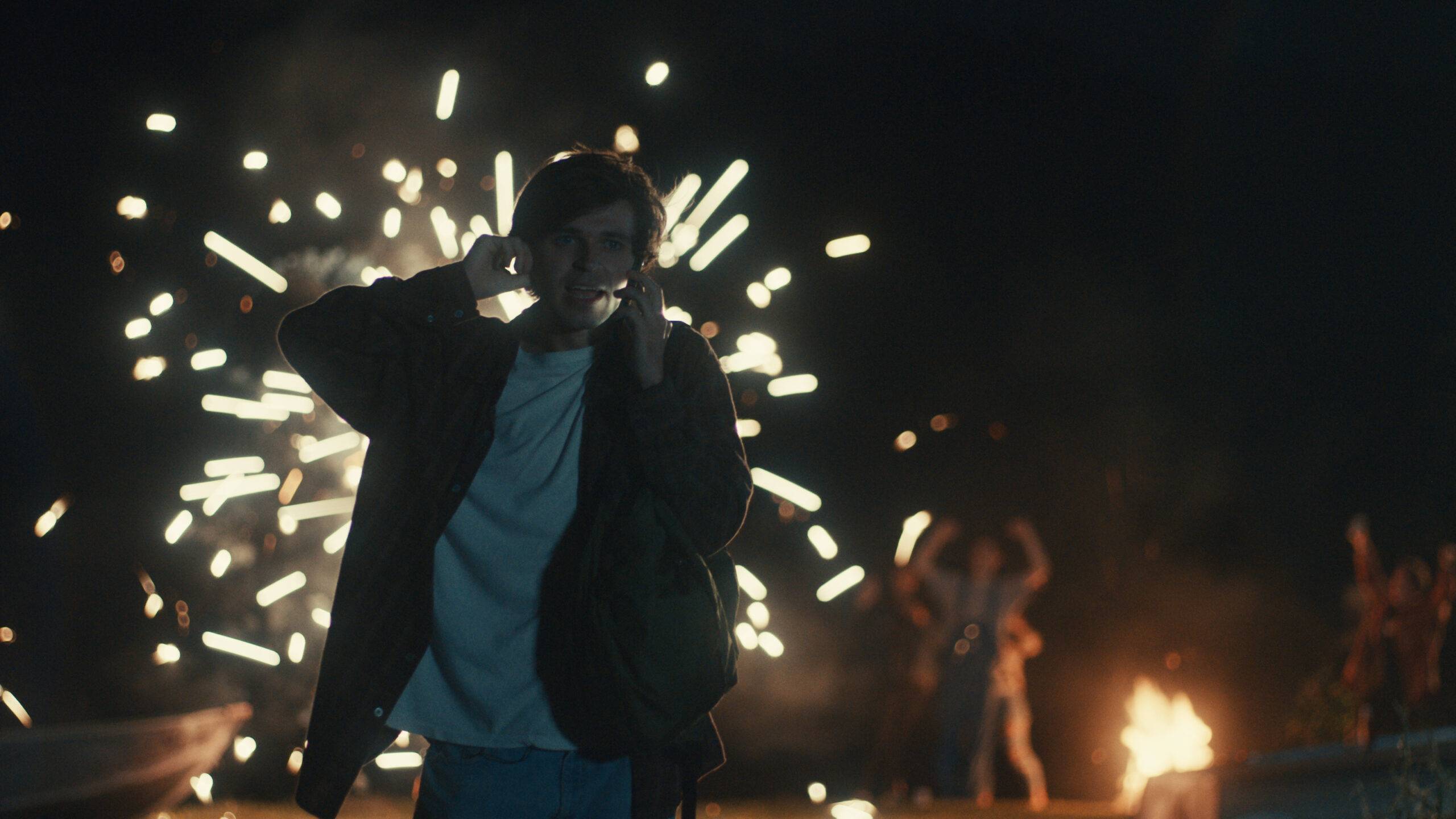
Getting the Film Made as an Indie Production and Prominent Motifs
It’s amazing that you were able to get Cathy on board, given the very indie nature of this film. Can you expand a bit on the process and how you got this film made?
When you think of a “passion project”, this it it. Originally, I made this concept trailer for it, and I was happy with how that came out, so I spent about a year trying to get proper financing for the film I spent about a year shooting for a number I had in mind and I got into some pretty big doors and had some cool conversations, but there were two things that were really going against me. It was the very start of Covid, which meant everyone was holding onto their money a bit tighter, and then obviously being a first-time director as well. So I was on a call with Anne Carey, a producer behind some high-profile films like 20th Century Women, and I asked her for advice as a young filmmaker who was new to this feature film process. I explained that the number I was looking for wasn’t really happening and how I was trying to figure out whether I should make this film with the money I have in my bank account and the small amount of money I’ve been able to raise or whether I should wait another year and try again. She said, “you can die an old man waiting for money”, and she couldn’t be more right. She told me to make it with what you have and surround yourself with people who believe the impossible is possible.
In the end, the production value ended up being significant for the budget we had. We shot in Utica and they were so accommodating. There were maybe eight cop cars in the film, and we didn’t pay a penny. The ambulance in the film – nothing. Most of the locations – nothing. They just wanted to help. I also had a lot of really talented crew members who wanted to support the vision, despite the budget, and ultimately just doing it for the art. So I looked at these resources I had and said “I think I can do this”. I need to make this and I don’t want to lose my momentum. So, I made the decision to move forward with it, and the budget did balloon a bit, as one would expect, but in the end I don’t think much was sacrificed in the film. In some ways, the lower budget actually helped it be more focused on the story itself. And you still get the “toys”. You still have nice visual effects sequences and everything. Another thing I had going for me was an extremely talent post-production team – colour, visual effects, sound mixing. To sum it up, when you’re really passionate and straightforward, saying, “hey, we’ve got very little money, and I understand if you can’t do it, there’s no hard feelings”. When you’re that straightforward and the script is good, people are willing to give you a chance. The people who actually make films happen are amenable to hopping on projects that are unproven because maybe you find that lightning in a bottle.
It’s just a matter of willing it into existence. Frankly, I lost eleven pounds in three weeks, just out of stress. It was tough. But now I’m getting a world premiere, and the Calgary International Film Festival is such a cool festival.
Putting my formal interviewer hat to the side and putting on my “film lover” hat, I wanted to ask you about a couple of motifs in the film. What kept coming back to me, was the significance of “water” and “trains”. Could you speak to those images?
I’m so glad you picked up on that. You are right, I’d say those are the two major motifs in the film.
I’m very moved by water as a metaphor for life. There is this Buddhist quote about how it moves from its smallest point to its highest point to the shore and it’s not starting and ending, it’s just returning to its natural state, which is water. It is this constantly moving, cyclical, always fluid “thing”, as is life. When you are coming of age (which is a process reserved not just for the young), it feels like very choppy water. While I was conscious of water as a motif, I didn’t realize how major it was until after I finished the film. So I still have to think more about the meaning of it in this film.
The trains, however, was a very intentional motif, and there are some Easter Eggs too. At one point, if you go back, Benji (Justin Mark) is reading a comic book, which one of our graphic designers made, and he’s running alongside a train. Then there’s the train under the Christmas tree, which is actually the exact same model of train as we see later in the film, which was just dumb luck.
To me, trains represent movement and the idea of being trapped. I went to college for a couple years at Hamilton College, which is close to Utica, and while it is beautiful, there is also this feeling, especially in the winters, that things are going nowhere. While Utica is also a lovely town, it is in central upstate New York and some of these towns are not as economically prosperous. I think that Benji is at a point in his life where he has this trauma and all these skeletons behind him and he’s not 100% sure what is in front of him. So the train signifies both movement along his life track and also an escape. This promise of something “other”. Getting away and leaving everything in the rearview.
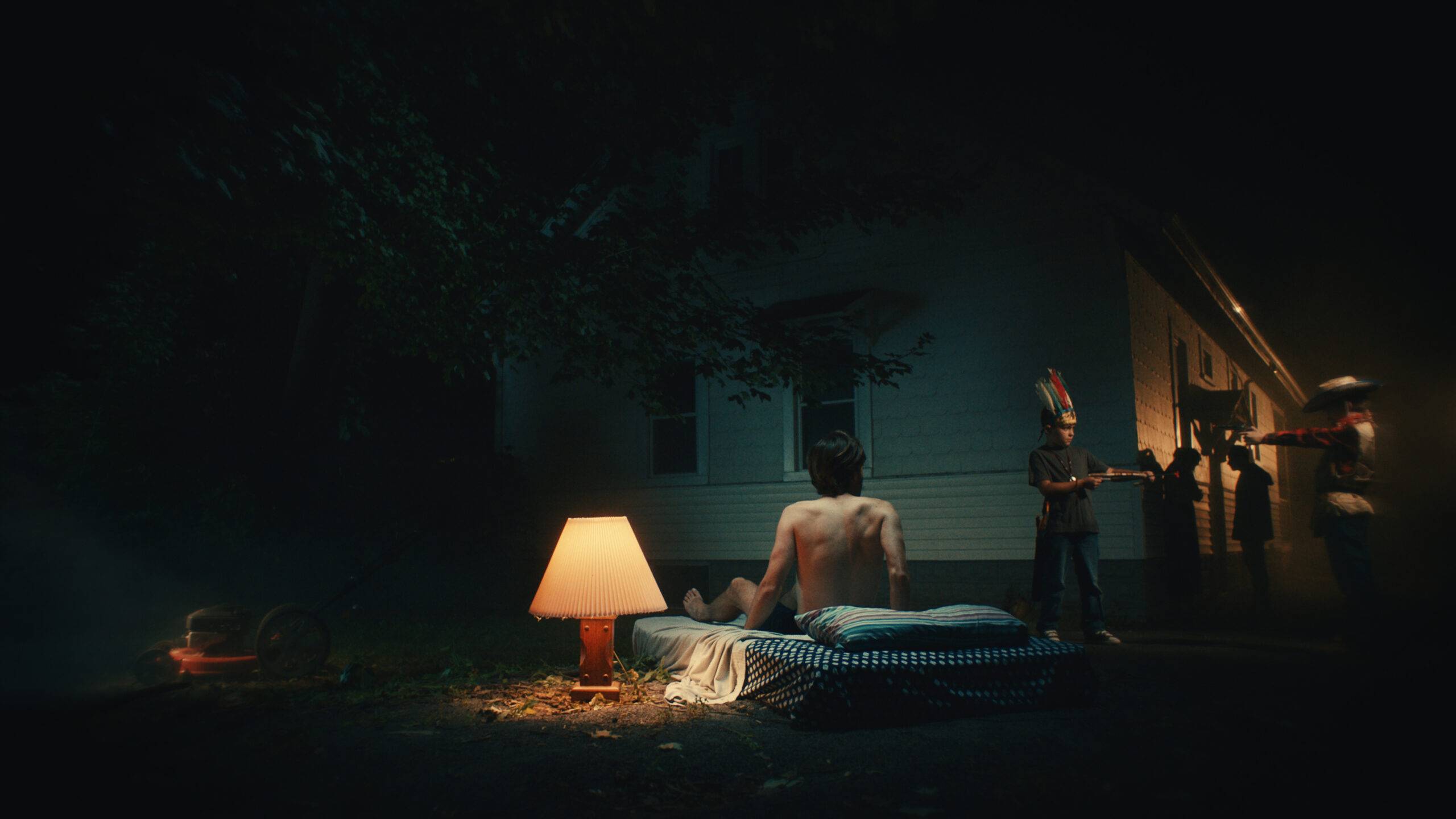
Existential Philosophy and Takeaways from the Film
I feel as though this relates to the Kierkegaard quote, “life can only be understood backwards; but it must be lived forwards”. Your character in this film, Eric, brings up Kierkegaard a lot. Are you into existential philosophy, or was this just an opportunity to present a humorous back-and-forth between Eric and Benji?
It’s really both. I love Søren Kierkegaard, and while I can’t pretend to be a well-read philosopher, I am familiar with the fundamentals of the movements and I think when you’re a teenager there’s a lot of big questions you ask yourself, and the older we get, the less likely we are to pose these questions. We start to think, “oh, well I’m supposed to have this figured out”, and if we ask these questions then people are going to know that I don’t know the secrets of life. This is coming from a twenty-three year old, I think we don’t have it figured out and we’re all just winging it.
And I also love the idea of this goofy, not-too-serious, stoner character who is just quoting Kierkegaard off the top of his head. It was weird and funny, and actually, Catherine Curtin loved that.
I love that character. Before I let you go, I wanted to give you an opportunity to share some final thoughts. Is there a takeaway from this film you would like folks to leave with?
Aside from the fact that it’s world premiere is September 22nd at 8:45PM at the Calgary International Film Festival and then playing again on the 25th, I really think there are two ways to watch the film and I’m more interested in what other people think and how they experience it. I’ll be in Canada and there will be a question-and-answer, so in those specific circumstances I can give some personal insights when I feel appropriate, but most people are not going to get that personal accompaniment. So, I want the film to stand on its own, but if you watch it, try not to put it into the category of all the other “young adult coming-of-age” films. It’s a tough film and also an enjoyable cinematic experience. There are a lot of points of levity and I did my very best to not just make it a “bummer”, and I really don’t think people will leave the theatre bummed out. The best someone can do is sit down with an open mind to watch a realistic story about how some people live life, especially how some people in America live life. It can be enjoyed by someone in that age group, but I’ve also noticed that a lot of older people really like it as well, because they pick up on broader themes and can relate. The one thing, though, that I personally love in the film, is the relationships with Benji and women in his life. Rita (Kirsten Russell), his mom, Laura (Holly Heiser), the cancer patient who becomes one of his best friends, and Susan, who is the only stable, positive presence in his life. I love seeing those interactions and how we are shaped by everyone around us. But is there one takeaway? I don’t think so.
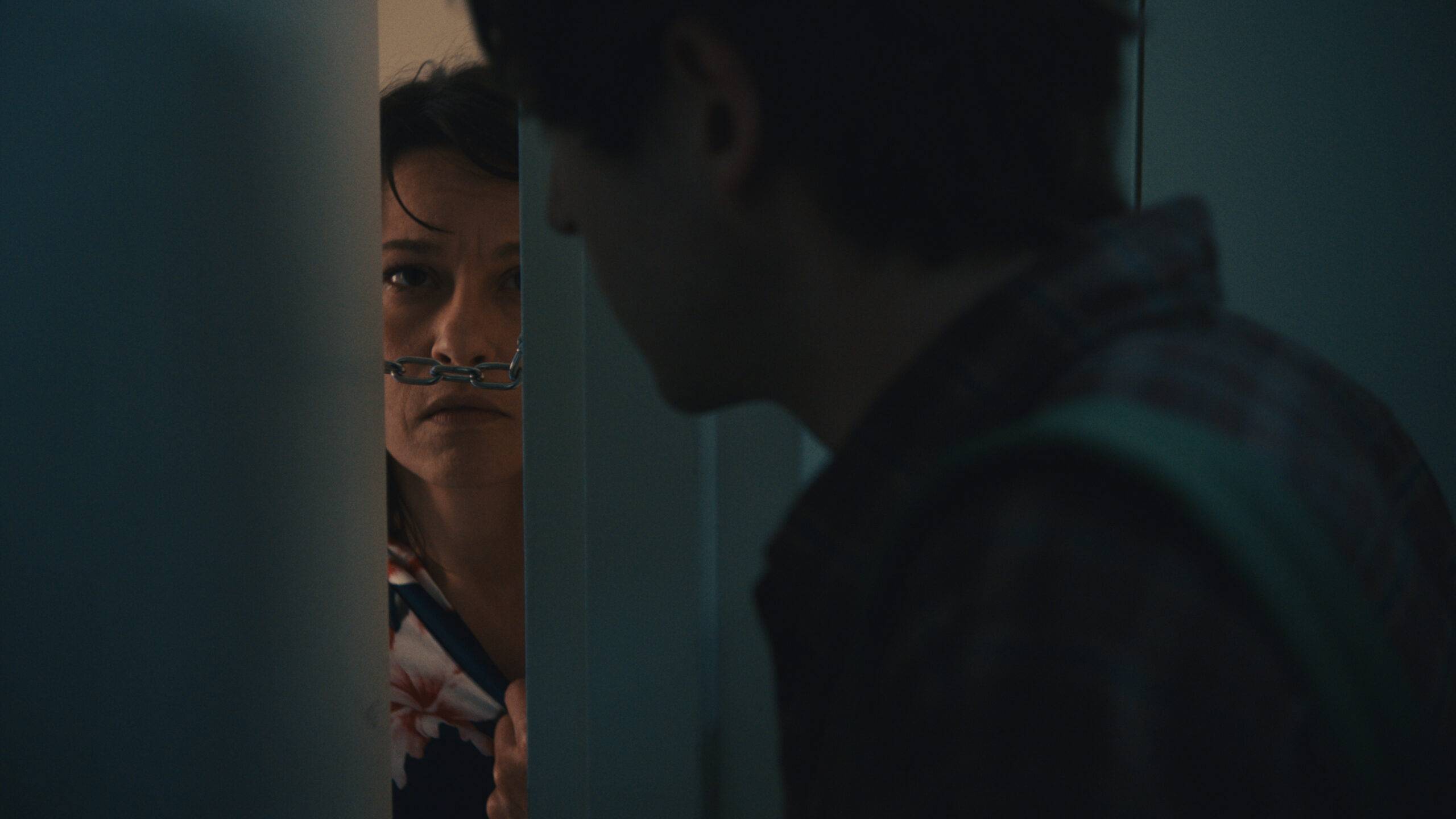
Check out Benji’s Hour, Gabriel Kahane’s feature film debut, premiering September 22nd at the Calgary International Film Festival. Gabriel will be in attendance to answer any questions you might have.

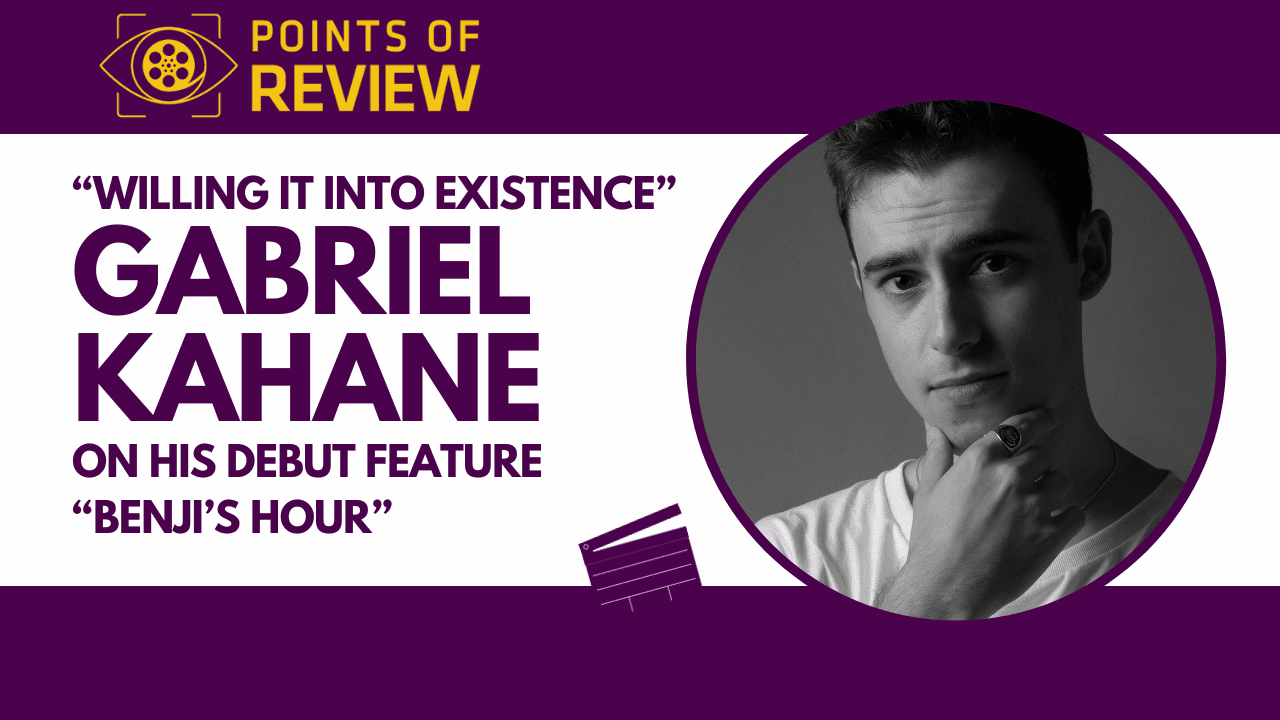



Pingback: January 19th at Sundance Film Festival - Points of Review